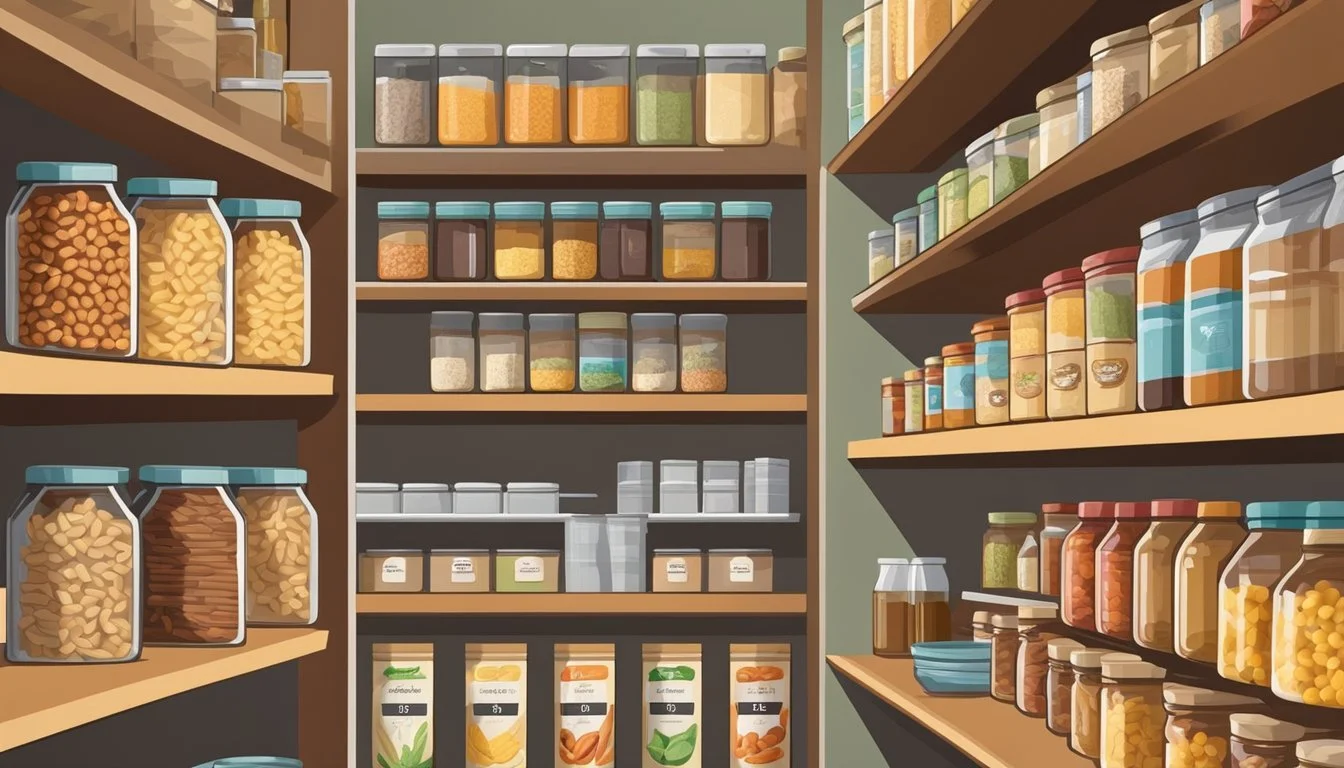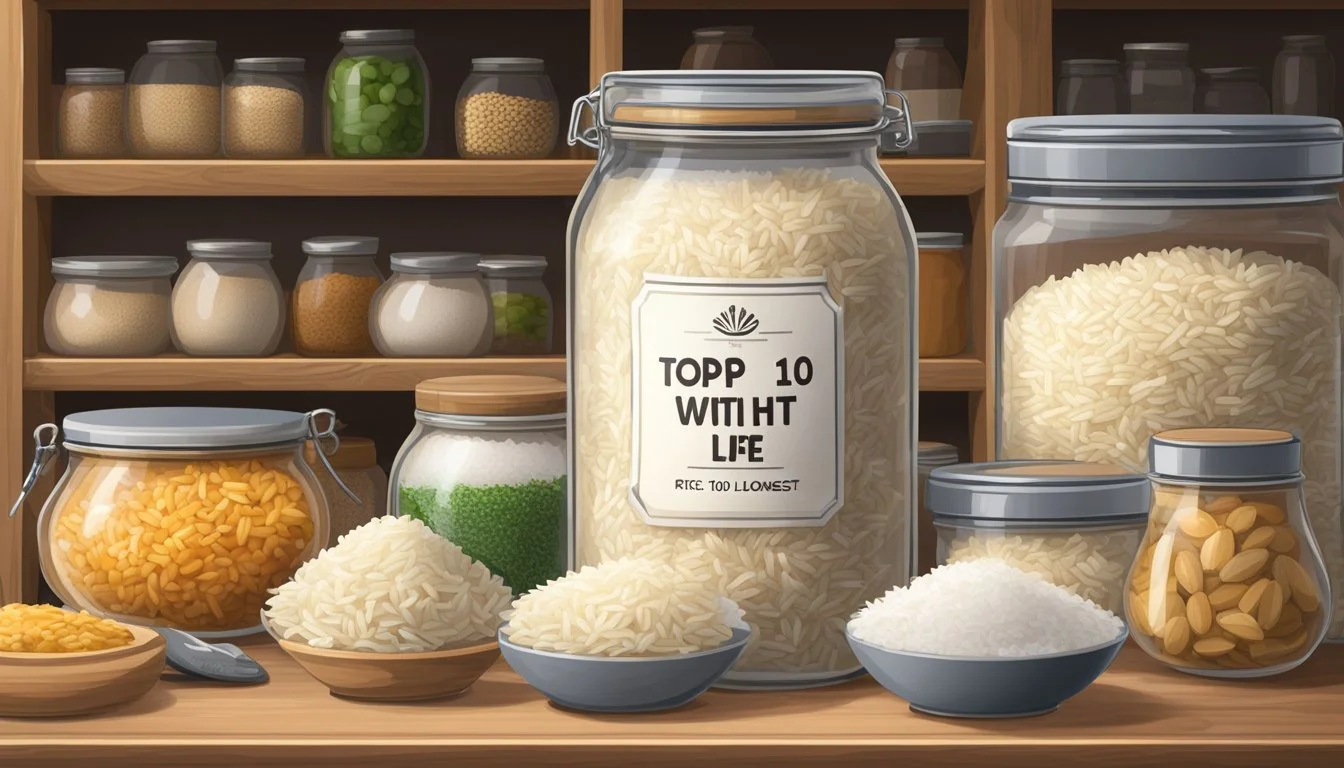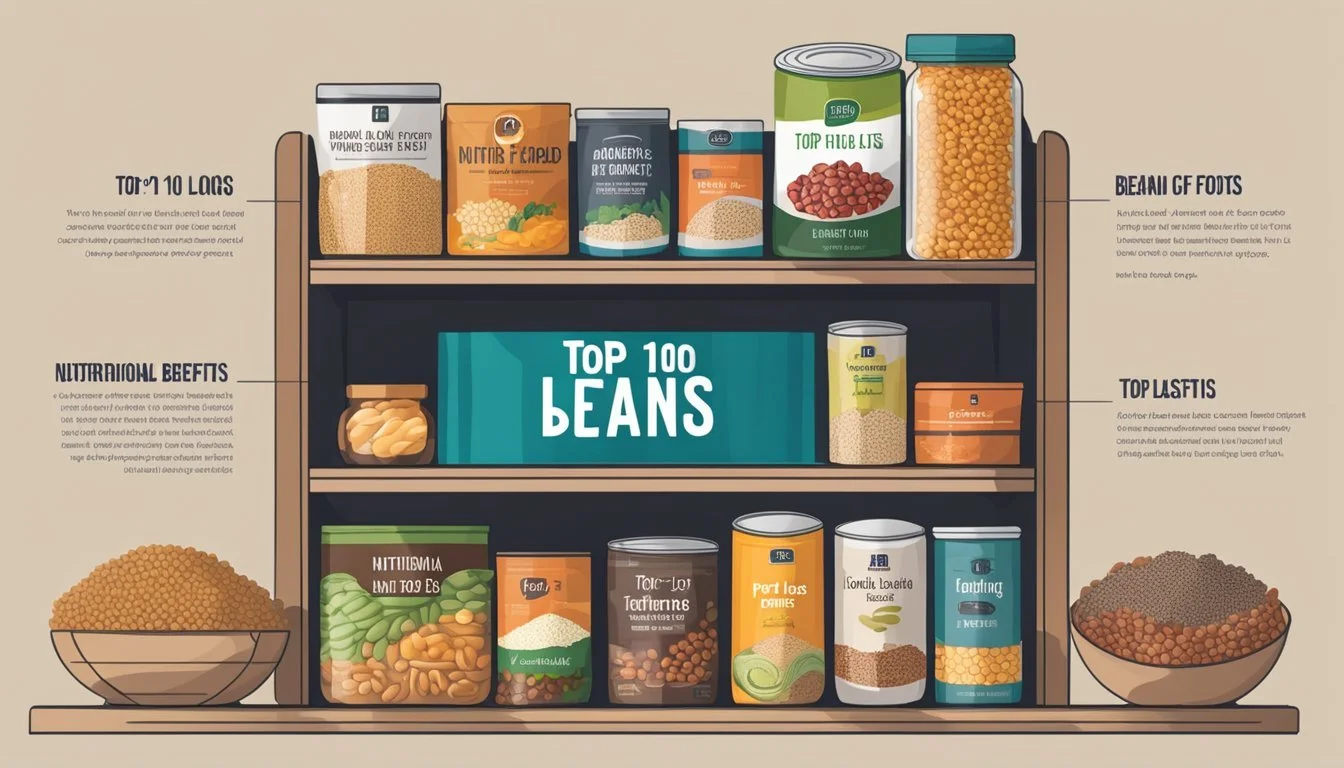Top 10 Foods with the Longest Shelf Life
Essential Guide for Preppers
Navigating the realm of long-term food storage can be a daunting task, especially with so many options available. Understanding which foods can last years without spoiling is crucial for anyone looking to build a pantry that stands the test of time. Identifying foods with the longest shelf life ensures that you can maintain a reliable food supply during emergencies or periods of limited access to fresh goods.
In this article, readers will discover the top 10 foods that boast the longest shelf lives, making them ideal candidates for inclusion in any well-planned food storage strategy. Each selected food item offers unique benefits, from nutritional value to versatility in meal preparation, providing peace of mind when it comes to long-term sustenance.
1) Honey
Honey is one of the most remarkable foods when it comes to shelf life. Known for its indefinite shelf life, honey has been found in ancient tombs still perfectly edible. The secret lies in its low moisture content and acidic pH, which inhibit the growth of bacteria and fungi.
Proper storage is key to maintaining honey's longevity. Keep it in a sealed container at room temperature. Over time, honey may crystallize, but this doesn't signify spoilage. Gently warming the jar in warm water will return it to its liquid state.
Honey also possesses antimicrobial properties. This is due to the presence of hydrogen peroxide and other compounds that inhibit microbial activity. These qualities ensure that honey remains safe and nutritious for an extended period.
Use honey not only as a sweetener but also for its medicinal properties. It can soothe sore throats and act as a natural remedy for minor burns and wounds. Its versatility and longevity make honey a valuable addition to any long-term food storage plan.
2) White Rice
White rice is one of the top foods with a remarkably long shelf life. When stored properly, white rice can last up to 30 years. This means it's an excellent option for emergency food supplies.
Proper storage involves using airtight containers. Mylar bags with oxygen absorbers are particularly effective. Food-grade buckets and #10 cans also work well for long-term storage.
White rice must be kept in a cool, dry place. Humidity and high temperatures can significantly reduce its shelf life.
White rice is not just durable, but also versatile. It can be used in a variety of dishes, making it a staple in many households. This combination of longevity and versatility makes it a valuable item for long-term storage.
3) Dried Beans
Dried beans are a staple in many households due to their impressive shelf life and nutritional value. They are known to last for years when properly stored, making them an excellent choice for long-term food storage.
When stored in ideal conditions, such as a cool, dry, and dark place, dried beans can remain good for 10 to 30 years. Airtight containers are recommended to protect them from moisture and pests.
Maintaining a storage temperature between 50-70°F (10-21°C) and keeping humidity levels below 15% can further extend their longevity. Oxygen absorbers added to storage containers can also help maximize their shelf life.
Despite their long shelf life, dried beans are best used within 1-2 years for optimal quality. Prolonged storage may result in longer cooking times, although their nutritional value remains largely intact.
Varieties like black beans, pinto beans, and chickpeas are popular choices. These beans provide a good source of protein, fiber, and essential nutrients, making them a valuable addition to any pantry.
4) Pemmican
Pemmican stands out as a food with an exceptional shelf life. This traditional food, originating from Indigenous cultures in North America, combines lean, dried meat with fat and sometimes berries. The combination creates a dense, nutrient-rich product.
Properly prepared and stored, pemmican can last between 3 to 5 years at room temperature. This longevity increases when the food is kept in a freezer.
To maximize its shelf life, storing pemmican in airtight containers is recommended. Methods such as vacuum sealing are particularly effective. Removing air prevents moisture and preserves freshness.
The durability of pemmican makes it a reliable choice for long-term storage and survival situations. Its blend of fat and protein provides essential nutrients, ensuring it remains a staple in emergency supplies.
5) Powdered Milk
Powdered milk is a vital component for long-term food storage due to its extended shelf life.
Nonfat powdered milk generally lasts longer than whole milk or buttermilk powders. This is because fat in whole milk and buttermilk is less stable over time. When stored correctly in cool, dry conditions, powdered milk can remain usable for 2 to 10 years or more.
Products like Saratoga Farms powdered milk boast a shelf life of over 20 years when sealed in double-enameled #10 cans. This packaging method enhances durability and longevity, making it a dependable choice for emergency supplies.
Proper storage is key to preserving powdered milk. Keeping it in airtight containers away from moisture and heat will help retain its quality. Nonfat variants, in particular, can benefit consumers aiming for maximum longevity in their food reserves.
Powdered milk is not only durable but also versatile. It can be reconstituted by mixing with water or used directly in recipes. In survival situations or everyday use, it serves as a practical alternative to fresh milk.
Including powdered milk in food storage plans can greatly increase meal versatility and provide essential nutrients. Its long shelf life and adaptability make it a valuable asset for anyone preparing for extended storage needs.
6) Canned Tuna
Canned tuna is a staple in many households due to its long shelf life and nutritional benefits. Unopened cans of tuna, when stored in a cool, dry place, can last between three to five years.
Proper storage conditions are crucial for maintaining the quality and safety of canned tuna. It should be kept away from heat sources and moisture to preserve its longevity.
Once opened, canned tuna should be consumed within five days. Refrigeration after opening helps ensure it remains safe to eat and retains its flavor and texture.
7) Hardtack
Hardtack is a simple, durable food known for its extraordinarily long shelf life. Made from just flour, water, and salt, it has been a staple for centuries among sailors, soldiers, and pioneers.
When properly stored, hardtack can last for decades. In some cases, it has been known to remain edible for 50 years or more.
The preparation of hardtack requires baking at a low temperature to thoroughly dry out the moisture, which helps preserve it. This hard-baked nature also contributes to its longevity.
While hardtack is not renowned for its taste, it can be a vital source of sustenance during emergencies. Its longevity and simplicity make it a reliable choice for long-term food storage.
8) Salt
Salt is one of the most essential and long-lasting foods. It has been used for centuries for various purposes, including food preservation and seasoning. Due to its nature, it does not spoil and can last indefinitely if stored properly.
The ability of salt to prevent microbial growth makes it ideal for preserving foods. It draws moisture out, creating an environment where bacteria cannot thrive. This is why it has been a staple in food preservation methods such as curing meat and pickling vegetables.
Salt should be kept in an airtight container to stay free of contaminants and moisture. Exposure to humidity can cause it to clump, but this does not diminish its preservative properties.
Moreover, salt has various uses beyond cooking. It serves in cleaning, de-icing, and even as a therapeutic agent in certain traditional health remedies. Its versatility and indefinite shelf life make it a must-have in any long-term food storage plan.
9) Soy Sauce
Soy sauce is a versatile condiment that boasts an impressive shelf life. Unopened bottles can last indefinitely when stored in a cool, dry place. This longevity makes it a pantry staple for many households.
Once opened, soy sauce retains its best quality for about six months at room temperature. For extended freshness, refrigeration is recommended, where it can maintain its flavor for up to three years.
Different types of soy sauce have varying shelf lives. Regular soy sauce generally lasts 2-3 years, while tamari, a wheat-free variant, can last up to 10 years. Shoyu, made with roasted wheat, has a shelf life of up to 5 years.
Proper storage is key. Keeping soy sauce in airtight containers away from direct sunlight and heat sources helps preserve its quality. The low moisture content and high salt levels contribute to its durability, making it resistant to spoilage.
10) Instant Noodles
Instant noodles are a pantry staple with a notable shelf life. Unopened packets can last up to two years past their expiration date when stored properly. They maintain their safety for consumption even if their flavor may deteriorate slightly over time.
Each packet typically contains dried noodles and seasoning, both of which are designed for long-term storage. When stored in a cool, dry place, instant noodles can be reliably kept for extended periods without spoiling.
This makes them a favored choice for emergency food supplies and dormitory snacks. Instant noodles come in a variety of flavors, ensuring something for every palate.
During natural disasters, such as the 2011 tsunami, instant noodles have proven to be essential sustenance. Their portability and quick preparation make them an ideal food source in crises.
Beyond emergencies, instant noodles are popular globally for their convenience. Despite their long shelf life, consuming them within 18 months of the printed date ensures the best taste and texture.
Understanding Shelf Life
Shelf life is the duration during which a food item maintains its best quality and safety. Several factors influence shelf life, including the type of food, its packaging, and storage conditions.
What Determines Shelf Life
Shelf life is impacted by the intrinsic properties of food. Foods with low moisture content, like hard grains, often last longer. Oil content also plays a role; for instance, white rice has a longer shelf life compared to brown rice due to lower oil levels.
Packaging significantly affects shelf life. Proper sealing, such as storing foods in Mylar bags with oxygen absorbers, can greatly extend longevity. For example, quinoa lasts approximately 3 years, but when stored correctly, it can extend to 8 years.
Processing techniques like drying and canning also enhance shelf life. Dry foods like lentils and rolled oats can last up to 25 years if kept dry and in airtight containers.
Importance of Storage Conditions
Storing food in optimal conditions is crucial for maximizing shelf life. A cool, dry, and dark environment helps prevent spoilage. Heat and humidity can speed up the degradation process, so maintaining a steady cool temperature is essential.
Using airtight containers helps protect food from moisture and contaminants. Foods stored in 5-gallon buckets with oxygen absorbers often have significantly extended shelf life.
It's also important to note the importance of rotation. Even long-lasting items should be used in a first-in, first-out order to ensure quality. This is particularly relevant for foods like powdered eggs and canned meats, which can last for several years if stored properly.
Nutritional Benefits of Long-Lasting Foods
Long-lasting foods are not only convenient for storage but also offer essential nutrients to maintain a healthy diet. These foods can help ensure a steady intake of vitamins and minerals.
Maintaining a Balanced Diet
Lentils and Peas: Lentils and peas are rich in protein and fiber. They are excellent sources of essential nutrients like iron and folate. Consuming these legumes can contribute to muscle repair and digestive health.
Nuts: Nuts provide healthy fats and protein. They are packed with nutrients such as vitamin E and magnesium, promoting heart health and maintaining strong bones. Regular consumption of nuts can lead to better metabolic health.
Whole Grains: Foods like barley, oats, and dried corn offer a wealth of fiber and important micronutrients like selenium and magnesium. Eating these grains can aid in digestion and provide a consistent energy source.
Vitamins and Minerals Retention
Sugars and Sweeteners: Products like maple syrup and stevia featured in long-lasting foods tend to retain their nutritional properties over time. Stevia provides a zero-calorie alternative sweetener, while maple syrup offers trace minerals like zinc and manganese.
Canned Vegetables and Fruits: Properly stored canned goods retain a significant amount of their vitamins such as vitamin C and A. The preservation process locks in nutrients, making them a reliable source of essential vitamins throughout their shelf life.
Hardtack: Hardtack, made from flour and water, does not offer much in terms of vitamins or fiber but is an excellent long-term energy source. Its high carbohydrate content can sustain energy levels in emergency situations.
Incorporating these long-lasting foods into your diet ensures that you have access to vital nutrients even during extended storage periods.






